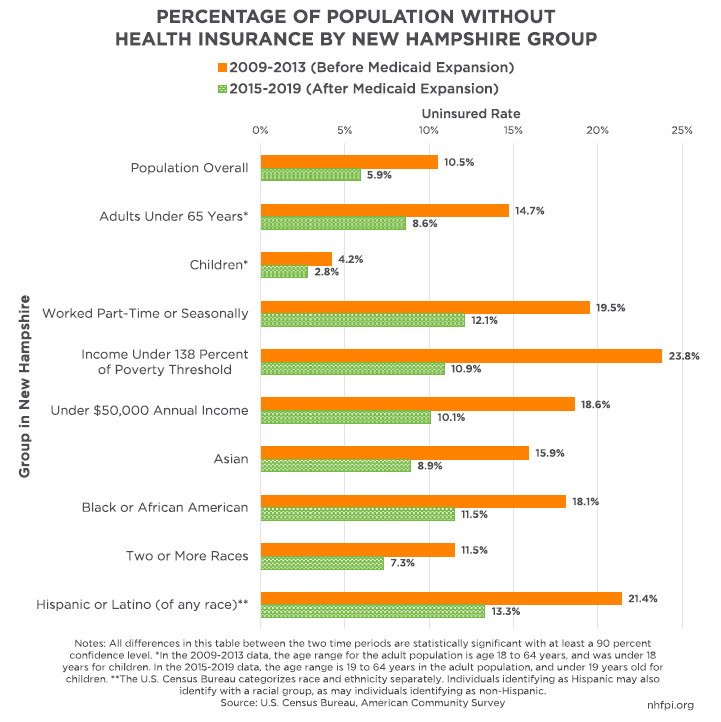In the five years immediately before Medicaid Expansion’s implementation in New Hampshire, the percentage of the population without health coverage was 10.5 percent. In the five years following Medicaid Expansion, that uninsured rate had fallen to 5.9 percent. The number of people without coverage dropped by 58,000 people, a 42.3 percent decline, in the five years after implementation relative to the five years before. While other changes in the economy likely impacted health insurance coverage, the uninsured rate in neighboring Maine, which did not adopt Medicaid Expansion until 2019, fell only 2.5 percentage points across the same time periods. Following Medicaid Expansion, the percentage of Granite Staters lacking health coverage decreased across all groups in New Hampshire, with especially pronounced decreases among Granite Staters with incomes below 138 percent of the federal poverty threshold, people in households with less than $50,000 in annual income, part-time or seasonal workers, and Granite Staters identifying as a member of certain racial or ethnic minority groups in New Hampshire.
Learn more in NHFPI’s January Issue Brief: The Effects of Medicaid Expansion in New Hampshire.

